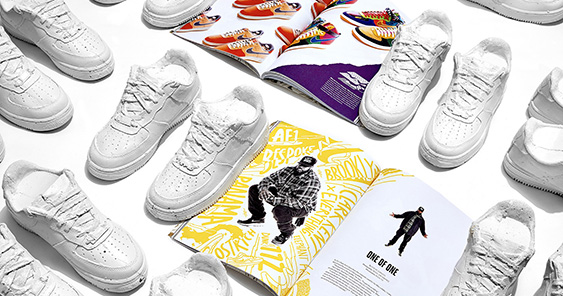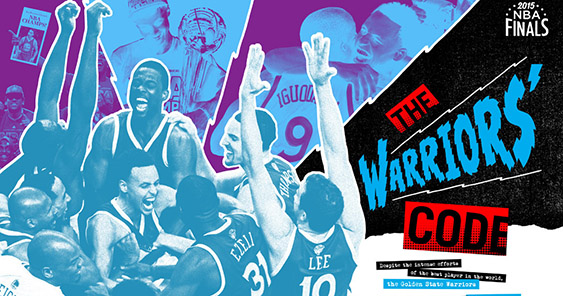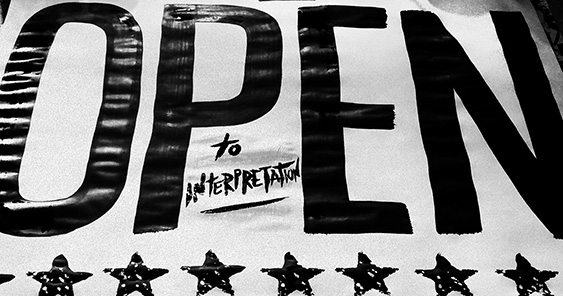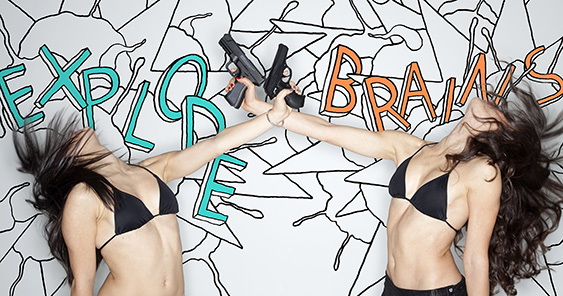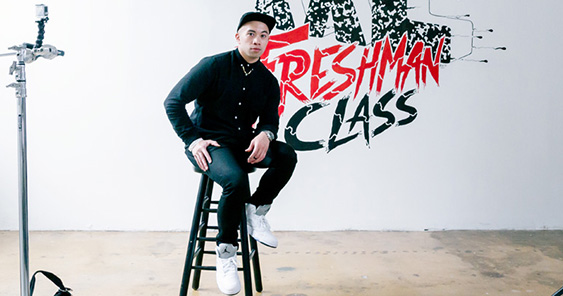Interview by Angel Guerrero
Words by Rome Jorge
Rich Tu is footloose. He has resided in Portland, Oregon where he worked with the design team at the Nike Campus. But he’s a native of New Jersey with a New York state of mind, where he’s worked at The New York Times and The New Yorker as an illustrator, at NBC Universal, Inc. at the Rockefeller Plaza and at AKA NYC as an art director, and the Robert Busch School of Design as adjunct professor. He earned a bachelor’s degree in Communication and Psychology from Rutgers University, New Jersey, and a master’s degree in Illustration as Visual Essay from School of Visual Arts in Chelsea, Manhattan. His works have been exhibited at galleries and festivals in New York, Los Angeles, Berlin, as well as the Scope Miami festival during Miami’s Art Basel week. But Tu will always be the kid from St. Joseph’s Roman Catholic grammar school in East Orange, New Jersey—the only Filipino-American kid, the son of an architect, growing up in a predominantly African-American school and neighborhood, looking up to neighborhood icons such as “Uncle Vinnie” aka Vinnie Brown from the Grammy award-winning hip hop trio Naughty By Nature pimping out a collection of sneakers.
At One Show awards in New York, adobo magazine Editor-in-Chief Angel Guerrero caught up with Tu for an exclusive interview. The noted illustrator and designer of street apparel revealed his plans after Nike.
“I’m originally from the East Coast so it’s a return home. I love working for myself and on a variety of projects. I’m represented by an studio/agency named Sunday Afternoon, and I think they’re looking forward to having me back with an open calendar and letting people know I’m back on the market. It’s a bit like a dating again after a long relationship. At first you’re not sure how to approach someone, but then you take a shower and get a haircut and remember how it’s done,” he reveals, adding, “First thing’s first, however. When I get back, I’m going to Coney Island to eat some hot dogs and hang out at Luna Park.”
He recalls his time at Nike: “It was an amazing learning experience. For the past decade I’ve made an effort to have a variety of creative experiences because I’m always a student. I’ve been honored enough to stay at companies long enough to understand a process and work flow. I feel I’ve picked up so much by doing so. Nike was by far the most corporate environment I’ve had in my life (and the campus is gorgeous), and everyone there is so good. Literally, every creative I met there was a top notch talent and worth learning from.”
“Nike really prides itself on innovation. From the outside, that isn’t always immediately understood especially because of such a heavy retro market. But from the inside, we would see the future of the company and the future of footwear literally everyday. Whether it was from new sole technology to a brand new creation space, we were always seeing something fresh,” Tu notes.
“Also, I was proud of the political stance the company took in the age of Trump. Mark Parker wasn’t quiet about his concerns, especially because the Nike population is so internationally diverse. He took a great stance, and pretty soon every sportswear company had to have their own opinion as well,” he enthuses.
Despite all that, Tu had to follow where his feet would take hime next. “At the end of the day, however, I feel that Nike was another graduate school experience, with a focus on learning and mastering a process, specifically how to make sneakers. I was feeding a childhood desire to get closer to something I loved. I felt tractor beamed out of New York, so it was pretty inevitable that I would come back,” he explains.
Constantly evolving his skills as a designer, Tu connects directly with his audience in the digital age. “I’ve hit a flow state for sure. My personal process is such that I always feel ready to learn a new work flow, execute something, and pitch it within a span of 24 to 48 hours. That’s the speed we must work in now. Every new digital tool we have allows us to add more polish to our ideas at the onset and we have to take advantage,” says Tu.
He declares, “I believe that personal branding and public perception is more important than ever. In a sense, I don’t really have a personal life anymore because I feel the need to document it through social mediaso that my audience has an idea of how I am on a day-to-day basis on top of knowing my work. I think I’ve been able to thrive in this environment however, because I’m myself pretty much myself 24/7. The artists’ mystique is dead. We’ve all acclimated to lifestyle porn, and want to live like the artists we observe.”
In 2010, Tu received the highly-coveted Young Guns 8 (YG8) award. He recalls, “Young Guns was a life changing experience bar-none. As an up-and-coming creative you’re looking for benchmarks of success and things to aim for. Young Guns was definitely that for me, because so many of creatives I looked up to (who I now consider my peers) had won. When I received the notice that I won (in Young Guns 8), I felt like all the hard work was worth it and I had been validated. Now, the ADC is about to begin their call-for-entries on YG15 and I was able to make the announcement at the One Show/ADC Student Awards this year. My mind is blown as to how far I’ve come,” he shares.
“New creatives will always have more access, better tools, etc and the work will change and evolve with every generation. That is a given. What I care about, especially with YG, is reaching out to diverse talent, both in terms of culture and skillset. By accessing, and GIVING access to diverse talent, you’re feeding the culture. One surefire way to go from good to great is to be exposed to newness,” Tu enthuses.
Tu reveals the life of a Filipino creative in the American workforce: “Being Filipino is an interesting stance in America. We can lean in to the Westernized perception of Asian culture, but join the racial discussion because of unique place in globalized world. We are ingrained in pop culture through this new minority-boom generation that cares about Hip Hop and dance culture, but we’re still pushed off to the side when it comes to on-screen talent. We are in a grey area between ‘immediate cool’ and ‘cultural subservience.’”
“As the Asian market becomes even more important our voice is growing because we represent both East and West by virtue of so many immigrants coming to this country since the 1970s and 1980s. We’re becoming cultural interpreters and informing the new feedback loop between East and West that started with Japan, he observes, adding, “I’ll put it like this. My parents were Filipino immigrants. I was born in New Jersey. I moved to New York. I like Hip Hop and comic books. I listen to Travis Scott when I run, and watch Brooklyn 99 while eating adobo. It is what it is.”
Tu graciously acknowledges his mentors. “The two biggest names that come to mind are Marshall Arisman and Steven Heller. Steven Heller gave me one of my first paid jobs with the New York Times Book Review over a decade ago and it was a huge moment for me, especially when it came to personal creative validation. I’ve only had one meaningful conversation with him, and that was that first portfolio review, but that one convo had a massive impact.”
He shares, “Marshall is my favorite educator ever. He is one of the greatest storytellers I’ve ever seen, and is the Chairman of SVA’s legendary Illustration as Visual Essay Program. One of my biggest takeaways from Marshall was a better understanding of energy. Marshall can see auras and told the entire class on the first day that we were surrounded by energy. At the time I didn’t really understand this, but now it makes so much sense. We all have a “vibe” that we put out and vibes that we choose to surround ourselves with. It’s part of knowing oneself, and being able to read the people we interact with. I may not see auras like Marshall, but I understand now what it means to create energy flow, consequences of inhibiting flow, and making snap decisions based on that energy we can perceive.”
Asked what’s next for him, Rich Tu replies, “Anything and everything. I’m a new babe in the world and I want to see it all.”
